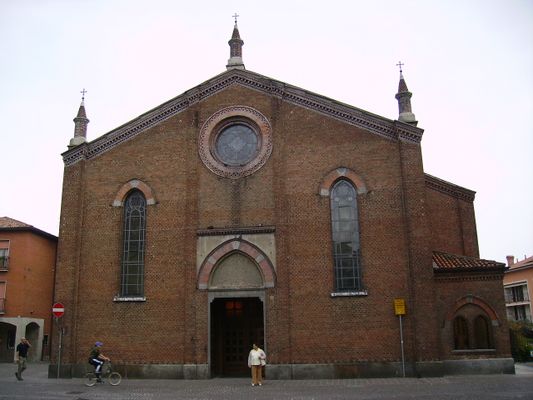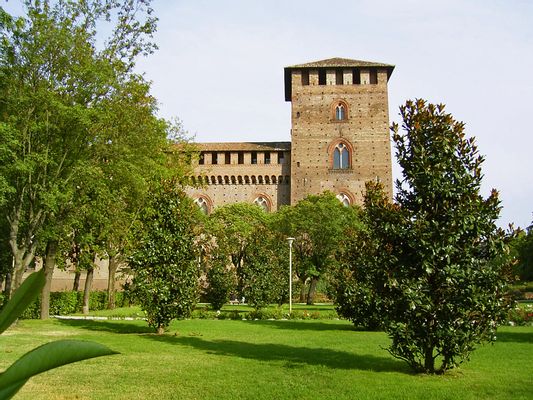This historic Lombardy town has medieval squares, a 12th-century cathedral, and traditional cheese-making traditions. Located 30 km from Milan along the Adda River.
Lodi, a city in Lombardy's Po Valley, sits along the western bank of the River Adda. In the central Piazza della Vittoria, you can shop at twice-weekly markets under medieval porticoes or admire the 12th-century cathedral's brick facade. Inside the octagonal Beata Vergine Incoronata church, you'll find golden decorations and Renaissance frescoes. Along the Adda River, glass-walled underwater stations let you watch fish swim by in their natural habitat.
Exploring Piazza della Vittoria
Piazza della Vittoria forms the center of daily life in Lodi. Medieval porticoes frame all four sides of the square, where local vendors sell fresh produce and regional specialties every Tuesday and Thursday. The 12th-century Romanesque cathedral rises on one side, its red brick facade crowned by a large rose window. You'll find the Gothic-style Palazzo Vistarini and the medieval Broletto (town hall) among the buildings surrounding the square.
Religious Architecture
The Beata Vergine Incoronata church stands out for its octagonal shape and rich interior. Gold leaf covers the walls, and intricate Renaissance paintings fill the ceiling panels. At San Francesco church (1280-1307), you can examine 13th to 15th-century frescoes that cover the Gothic walls. Visit Santa Maria Maddalena to see Carlo Innocenzo Carloni's paintings, including his masterpiece Deposition.
Local Food Specialties
Farmers in the Po Valley around Lodi make Granone Lodigiano, the original grana-style cheese. Try it as Raspadüra - paper-thin shavings that melt on your tongue. Many restaurants serve traditional rice with sausage and wild pigeon dishes. Save room for Tortionata, a flaky almond pastry that local bakers still make following centuries-old recipes.
River and Nature
Walk or cycle along the Adda River's paths to experience the countryside. At Paradiso Fish Park, glass-walled stations built into the riverbank let you watch carp, pike, and other freshwater fish swim past. The park includes several picnic spots and walking trails. You can also cycle along the historic Muzza Canal, which winds through farmland and small villages.
Ceramic Heritage
In the 18th century, Lodi's artisans developed their own style of tin-glazed maiolica ceramics, influencing pottery making across northern Italy. While the main ceramic museum closed in 2011, you can still visit working artisan workshops to see traditional techniques in action and buy locally made pieces.
Getting Around
Trains run regularly from Milan's central station to Lodi, with a journey time of about 20 minutes. Once in Lodi, you can walk to most sites within 15 minutes from the train station. The historic center's compact layout makes it easy to explore on foot.




















